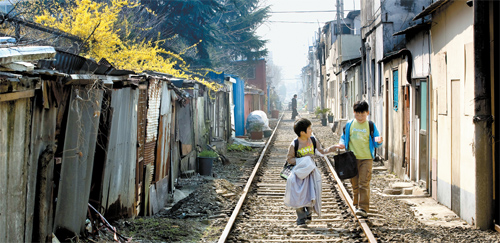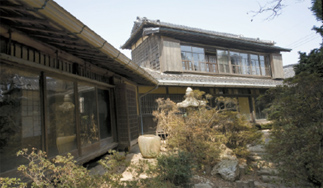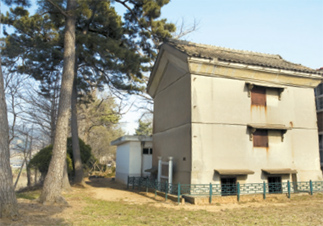A town untouched by time and tide

Gyeongam-dong railroad village in Gunsan, North Jeolla. By Cho Young-chul
As Korea’s export-based economy began to flourish, new buildings replaced older structures in large cities. In the countryside, new houses with modern red and blue roofing sprouted up in place of older, more dilapidated houses as part of former President Park Chung Hee’s Saemaeul (New Village) Movement, which was launched to modernize regional areas.
While houses like these came to dominate the Gunsan region, the port city itself, which sits on the Yellow Sea, has been left untouched, with many Japanese-style houses and buildings from the early 20th century still intact.
The city, which is now the home of the Gunsan U.S. Airbase, was a source of rice for the Japanese during the colonial period (1910-1945), when many Japanese people settled there. The city quickly took on a modern look with Japanese-style houses and buildings influenced by German architecture.
A walking tour of Gunsan, sponsored by the city and taking up to four hours, reveals many of the city’s major attractions.
The Shimatani storage house remains where the Shimatani rice plantation used to be. The three-story building, which is located behind Balsan Elementary School, might not look like much now but it used to house valuables collected by owner Yayoya Shimatani.
The old Gunsan customs house was built in 1905 by Koreans under pressure from the Japanese. Construction is said to have cost 85,000 won ($69), a huge sum at the time.

Hirose house in Shinheung-dong
The Gyeongam-dong railroad village is a popular destination for photographers. A railroad track runs through the middle of the village, with its slate-roofed housing on one side and storage rooms and washrooms on the other. The railway, which stretches a total of 2.5 kilometers (1.55 miles), was built for Paper Korea, which made paper used for newspapers.
How to get there: One of the easiest ways to get to Gunsan is to take a bus from the Gangnam Express Bus Terminal. Express Bus Terminal Station, lines No. 3 and 7. For more information, visit www.gunsan.go.kr or call (063) 450-4000.
By Jason Kim [jason@joongang.co.kr]

Shimatani storage house










with the Korea JoongAng Daily
To write comments, please log in to one of the accounts.
Standards Board Policy (0/250자)